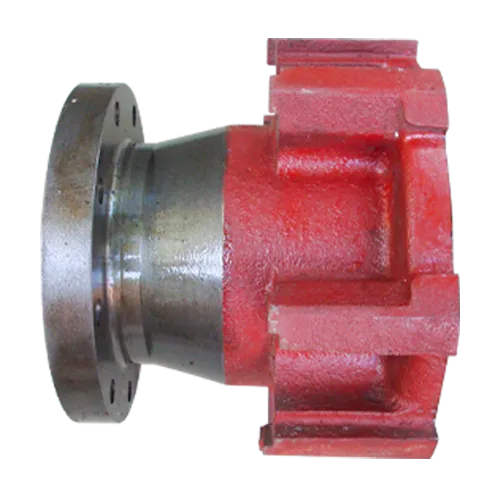Mobile:+86-311-808-126-83
Email:info@ydcastings.com
welding cast iron to steel
Welding Cast Iron to Steel Techniques, Challenges, and Best Practices
Welding dissimilar materials, such as cast iron and steel, is a complex but often necessary task in various industrial applications. Cast iron is known for its excellent castability and wear resistance, while steel is valued for its strength and ductility. The joining of these two materials can bring about unique properties in the resulting weldment. However, the distinct differences in their composition, thermal expansion characteristics, and mechanical properties pose significant challenges. This article will explore the techniques, challenges, and best practices for effectively welding cast iron to steel.
Understanding the Materials
Cast iron is an iron-carbon alloy with a carbon content of more than 2%. Its microstructure typically includes graphite flakes or nodules, providing it with desirable properties like excellent wear resistance and good machinability. However, cast iron is also inherently brittle, making it susceptible to cracking, particularly when subjected to thermal stress.
Steel, on the other hand, generally contains less than 2% carbon and can be manipulated for various mechanical properties through different alloying elements and heat treatments. Unlike cast iron, steel has greater ductility and toughness, which can help absorb energy without fracturing. When welding cast iron to steel, it is crucial to consider these differences to prevent issues like cracking and distortion.
Techniques for Welding Cast Iron to Steel
Several welding methods can be employed to join cast iron and steel, with the most common being gas tungsten arc welding (GTAW), gas metal arc welding (GMAW), and shielded metal arc welding (SMAW). Each of these methods has its own advantages and challenges.
1. Gas Tungsten Arc Welding (GTAW) This method offers precise control, making it ideal for thin sections of cast iron. As a non-consumable electrode process, GTAW allows for greater control over heat input, thus minimizing the risk of cracking. However, it requires skilled operators and can be slower than other processes.
2. Gas Metal Arc Welding (GMAW) Also known as MIG welding, this technique can provide faster production rates but may have a higher risk of introducing porosity if not carefully controlled. The use of a filler material that matches the properties of both base materials is essential in this process.
3. Shielded Metal Arc Welding (SMAW) Known as stick welding, SMAW is versatile and can be used in various positions, but it can introduce more heat into the joint, increasing the chances of cracking. Selecting the right type of electrode designed for dissimilar metals is critical.
Challenges Encountered
When attempting to weld cast iron to steel, several challenges arise. The most significant challenges include
welding cast iron to steel

- Thermal Expansion Cast iron has a different coefficient of thermal expansion compared to steel. When heated, cast iron expands less than steel, which can lead to residual stresses and cracking in the weld bead and heat-affected zone (HAZ) upon cooling.
- Metallurgical Compatibility Mixing the different metallurgical compositions of cast iron and steel can lead to the formation of brittle intermetallic compounds. This can compromise the integrity of the weld.
- Preheating Preheating the cast iron section before welding is often necessary to reduce the risk of cracking. The appropriate preheat temperature depends on the specific type of cast iron being welded.
- Post-Weld Treatment Stress relief treatments, such as annealing, may be needed after the weld to mitigate residual stresses and improve ductility.
Best Practices
To successfully weld cast iron to steel, consider the following best practices
1. Use Compatible Filler Materials Select filler materials specifically designed for joining cast iron to steel, ensuring they have properties that can accommodate the stresses involved.
2. Control Heat Input Minimize heat input using appropriate welding techniques and processes, maintaining care in travel speed and amperage settings.
3. Preheat and Post-Weld Treatments Implement preheating to reduce thermal shock and follow with stress relief treatments to enhance the overall structural integrity of the weld.
4. Conduct Proper Testing Regularly inspect and test the welds to ensure they meet performance requirements, employing methods such as visual inspection, ultrasonic testing, or dye penetrant tests.
Conclusion
Welding cast iron to steel is a valuable skill that opens new possibilities in manufacturing and repair work. By understanding the properties of each material and implementing the correct techniques and practices, welders can produce strong, durable joints that effectively integrate the best characteristics of both materials. While the challenges are significant, careful planning and execution can lead to successful outcomes in dissimilar metal welding.
-
Why Should You Invest in Superior Pump Castings for Your Equipment?NewsJun.09,2025
-
Unlock Performance Potential with Stainless Impellers and Aluminum End CapsNewsJun.09,2025
-
Revolutionize Your Machinery with Superior Cast Iron and Aluminum ComponentsNewsJun.09,2025
-
Revolutionize Fluid Dynamics with Premium Pump ComponentsNewsJun.09,2025
-
Optimizing Industrial Systems with Essential Valve ComponentsNewsJun.09,2025
-
Elevate Grid Efficiency with High-Precision Power CastingsNewsJun.09,2025











